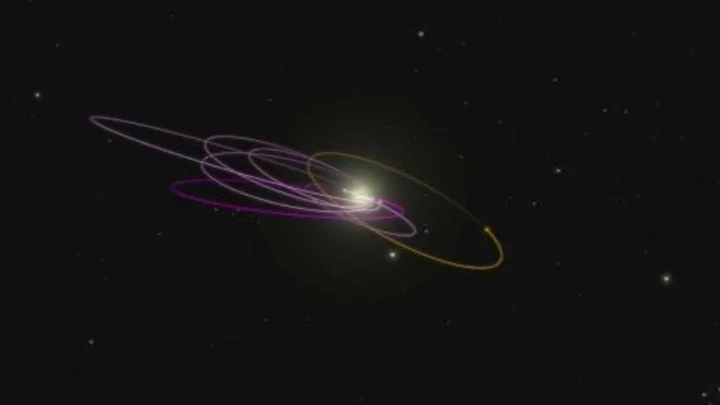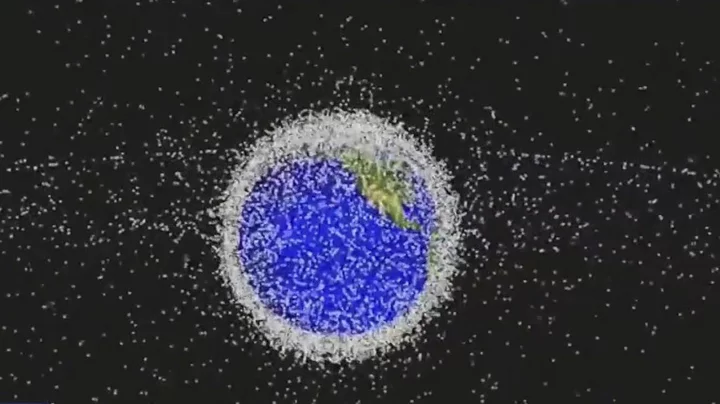
New King Kong game is being torn apart by the internet
The new King Kong video game, Skull Island: Rise of Kong, has released to an awful reception, with some naming it as the 'worst game of the year'. A new beat-em-up starring colossal kaiju favorite King Kong, flying in under-the-radar? You might be thinking 'sign me up' for a bit of that. If you're thinking that, you might want to hold back. Skull Island: Rise of Kong was only announced in July, and is available on PlayStation 5, Playstation 4, Xbox Series X/S, Xbox One, Nintendo Switch and PC, and come to think of it, there wasn't a great deal of promo heralding its release at all. That all makes sense now. The game is flat-out terrible, and the only noise being made about it is being generated by gamers who are ripping the new release apart with footage of the game and its cutscenes being shared far and wide. A quick snapshot of user reviews shows Skull Island: Rise of Kong being named as janky, terrible, static, awful, buggy and a 'complete scam' - the professional reviews (and we'll get to those) aren't much better at all. And users really think it could beat Lord of The Rings: Gollum to the title of 'worst of the year.' In particular, one cutscene involving a JPEG flashback/jumpscare is generating a lot of attention. All of it mocking the presentation of the game: It's not just gamers who are taking shots either, the gaming press is savaging the new release. Kotaku said the 'New King Kong Game Is Very, Very Bad' and called it a 'bland beat-’em-up with bad cutscenes, nasty visuals, and not much else' while Eurogamer called it a 'swing and a miss.' Fans of the great ape had been waiting a long, long time for a video game featuring Kong. The official video game of Peter Jackson's King Kong film titled - wait for it - Peter Jackson’s King Kong: The Official Game of the Movie came out in 2005 over a mix of consoles. You could've played it on Playstation 2, it has been that long. It's sad to say, but you'd be better off finding a way to play the older game. It's far, far better - and we can vouch for that. Sign up to our free Indy100 weekly newsletter Have your say in our news democracy. Click the upvote icon at the top of the page to help raise this article through the indy100 rankings.
2023-10-18 20:20

Adobe creates futuristic 'quick change' dress that could end fast fashion
Adobe have unveiled a mind-blowing 'quick change' dress at their recent Adobe Max conference, and no one can quite believe how the future of fashion could look. Christine Dierk, a researcher, unveiled the seemingly ordinary dress, before showing how it can transform colour and pattern within a split second, with limitless options. "We’re excited for a future where there’s more ways to express yourself", she told the audience, as she demonstrated the product known as 'Project Primrose'. The company is reportedly hoping to replicate the technology onto other items. Sign up to our free Indy100 weekly newsletter
2023-10-18 19:59

Flat Earthers attempted to sail to the edge of the world – and it ended in massive disappointment
Despite no evidence backing up their claims, Flat Earthers are adamant that they are correct when it comes to the shape of our Earth. Even when their own evidence disproves them, it seems. Back in 2020, a couple from Venice tried to prove the world was flat by setting sail to the edge of the world, which they believed was somewhere near Sicily, after a planned Flat Earthed cruise to Antartica was cancelled due to the Covid-19 pandemic. The couple violated the lockdown restrictions in place at the time of their travels, selling their car in order to buy a boat. Using a compass, a device that works because the Earth is round, the pair set off in their boat to reach Lampedusa. However, it was not long until they found themselves lost, tired, and on the island of Ustica instead. Salvatore Zichichi of the Maritime Health Office of the Ministry of Health told Italian newspaper La Stampa: "For them, Lampedusa [an island of the Italian Pelagie Islands in the Mediterranean Sea] was the end of the Earth." "The funny thing is that they orient themselves with the compass, an instrument that works on the bass of terrestrial magnetism. A principle that they, as Flat Earthers, should reject." They were placed in quarantine by health officials due to the ongoing pandemic at the time, but the couple escaped and sailed away in pursuit of the edge of Earth. Three hours later, they were caught. The pair tried to escape one more time but failed, and abandoned their plan, taking a ferry back to mainland Italy once their time in quarantine was fulfilled. Sign up to our free Indy100 weekly newsletter Have your say in our news democracy. Click the upvote icon at the top of the page to help raise this article through the indy100 rankings.
2023-10-18 19:23

Hitting 'snooze' on your alarm might actually be good for you, scientists say
If you’re one of the many people who loves sleep and finds it a huge struggle to get up in the mornings, we’ve got some news that might just make you feel a little better. As it turns out, scientists have released a new study which suggests that hitting snooze on your alarm may actually be good for you. A new study has claimed that the extra sleep brought by snoozing an extra half hour in the mornings could help to improve cognitive performance. The research published in the Journal of Sleep Research surveyed more than 1,700 adults from across the world and looked into their morning habits. According to the study, a total of 69 per cent of those involved admitted they snoozed their alarms at least some of the time. Then, 31 of these people were tested and the researchers found that snoozing their alarms improved some of their scores following cognitive examinations. The tests they were subjected to involved things like memory tests and basic maths questions. Compared to not snoozing for 30 minutes, when the people did snooze they either improved their scores in the tests or their performance was not affected. "Snoozing for 30 minutes in the morning does not have any major negative effects on the sleep that night or how tired one feels when waking up," said Tina Sundelin [via Live Science], who is the lead study author and psychologist at Stockholm University in Sweden. "For those who are drowsy in the morning, such as evening people, and find that snoozing helps them wake up, the study shows that they may actually be more objectively alert [meaning that they performed better on the cognitive tests] after snoozing — even if they don't feel more or less sleepy.” It comes after a sleep expert revealed the worst common sleeping position for people which could be bad for our health. Sign up for our free Indy100 weekly newsletter Have your say in our news democracy. Click the upvote icon at the top of the page to help raise this article through the indy100 rankings
2023-10-18 18:27

Experts unravel mystery of the Pokémon episode that hospitalised hundreds of kids
Pokémon’s TV series has been delighting animé lovers for more than 26 years, and yet, there’s one episode that even the most diehard of fans may well have missed. The installment, titled Dennō Senshi Porygon (which roughly translates as "Computer Warrior Porygon”) aired in Japan on December 16, 1997. And, after that single, fateful outing, it was never to grace television screens again. The reason for the ban? Reports of a strange health outbreak among children which was linked to a specific scene. The episode follows Ash Ketchum, Pikachu and their pals as they investigate a faulty Poké Ball transfer machine by getting inside it. Once there, the team come under attack, but are saved when Pikachu unleashes one of his high-octane electric outbursts – represented by a barrage of red and blue strobe lights. And that’s where the trouble began. According to scientific paranormal investigator Benjamin Radford and sociologist Robert Bartholomew, who dedicated a study to the event: "At 6:51 PM, the flashing lights of Pikachu's 'attack' appeared on television screens. “By 7:30 PM, according to Japan's Fire-Defense Agency, 618 children had been taken to hospitals complaining of various symptoms." These symptoms included convulsions, nausea and vomiting, with news of the “illness” spreading rapidly throughout the country. Inevitably, it made headlines, with several news broadcasters replaying the offending clip, “whereupon even more children fell ill and sought medical attention,” Radford and Bartholomew wrote. The following day, TV Tokyo issued an apology, suspended the show, and announced an investigation into the cause of the seizures. Meanwhile, video retailers pulled the series from their shelves, and even the then-prime minister Ryuaro Hashimoto expressed concern at the use of rays and lasers in the popular cartoon. Within two days, the number of children reported to have been affected by the flashing sequence increased to around 12,700. And yet, after four months of investigation – with input from health experts and Japanese government officials – no obvious cause could be found for the outbreak and Pokémon returned to the airwaves. Because, although the bright flashes were assumed to be the cause of the health panic, such visual techniques had been used in numerous other animé episodes before, with no reports of any problems. So what was going on here? Well, a tiny fraction of the children who reported being affected were diagnosed with photosensitive epilepsy, with experts concluding that the rapid colour changes during the scene caused them to suffer seizures. However, the bulk of “patients” reported symptoms that had no identifiable “organic” cause and were, instead, consistent with a very different type of condition… Mass hysteria. Radford and Bartholomew attribute this “epidemic hysteria”, in large part, to the mass media, which they say fuelled panic and misinformation. "Many of the children's symptoms had no identifiable organic basis; other than the verified cases of seizures, the symptoms reported were minor and short-lived; the victims were nearly exclusively school children in early adolescence; and anxiety from dramatic media reports of the first wave of illness reports was evident,” they wrote. “Media reports and publicity fuel the hysteria as news of the affliction spreads, planting the idea or concern in the community while reinforcing and validating the veracity of the illness for the initial victims,” they continued. “According to news accounts of the time, the number of children said to be affected remained around 700 the evening of the Pokémon episode and the next day. “The next morning, the episode dominated the Japanese news. Japanese children who had not heard about their peers from the news or from their parents learned of it that morning when the seizures ‘were the talk of the schoolyards’,” they continued. “Once the children had a chance to hear panicky accounts of what had happened through the mass media, their friends and their schools, the number of children reported the next day to have been initially affected – 2 days earlier – increased by 12,000.” Radford and Bartholomew ended their paper by noting that this Pokémon drama offers a warning to us all. They pointed out that our continuing reliance on mass communications, especially TV and the internet, places us at risk of more and more hysteria outbreaks. “Technological innovations are occurring at unprecedented rates and have the potential to influence significant numbers of people beyond the typical number in traditional mass hysteria episodes,” they stressed. “Epidemic hysterias that in earlier periods were self-limited by geography now have free and wide access to the globe in seconds.” Concluding on an ominous note, they added: “The Pokémon illness symptoms are without precedence, given the large numbers affected, and may be a harbinger of future technological hysterias that have the capacity to affect unprecedented numbers of people at a phenomenal speed.” Sign up for our free Indy100 weekly newsletter Have your say in our news democracy. Click the upvote icon at the top of the page to help raise this article through the indy100 rankings.
2023-10-18 17:18

The Planet 9 theory is making scientists question the rules of our existence
In space, discoveries continue to be made that challenge scientific beliefs, as distant objects reveal the solar system is much bigger than first thought and the observation was previously made that a part of the sun is broken. Now, there is evidence to suggest the existence of a ninth undiscovered planet that is at the very edge of the solar system and could point towards evidence that our understanding of gravity is wrong. The discovery was made by two scientists who studied the effects that the Milky Way galaxy had on objects in the solar system’s outer edge. Galaxies are able to rotate extremely fast without any of their contents escaping, and most experts believe that the existence of dark matter might explain why. Dark matter is invisible and does not emit, nor reflect light, and it is hypothesized that galaxies are surrounded by dark matter rings that bind the galaxies together in their own gravitation pull and stop them from emitting material. But now, the gravitational theory of Modified Newtonian Dynamics (MOND) may suggest that dark matter is not why galaxies stay intact despite staggering rotational speeds. Instead, some believe that under the rotational velocities experienced by galaxies, a new kind of gravitational behaviour occurs. Case Western Reverse scientist Harsh Mathur, explained: “MOND is really good at explaining galactic-scale observations, but I hadn’t expected that it would have noticeable effects on the outer solar system.” Planet 9 comes into play because objects in the Kuiper belt (the disk that surrounds the outer edges of the solar system) were observed clustering and exhibiting orbital anomalies that do not occur with other objects in the belt. Experts believe this may be due to the presence of an undiscovered ninth planet, as this is a phenomenon that occurred before with the discovery of new planets as their gravitation pull attracts other solar system objects. Katherine Brown, Hamilton College professor of physics, said: “We wanted to see if the data that support the Planet Nine hypothesis would effectively rule out MOND.” Their study revealed that the hypothesis could be correct and could point towards the existence of Planet 9, but they urged that their dataset was very small, so no definitive conclusions could be made. Brown explained: “Regardless of the outcome, this work highlights the potential for the outer solar system to serve as a laboratory for testing gravity and studying fundamental problems of physics.” Sign up to our free Indy100 weekly newsletter Have your say in our news democracy. Click the upvote icon at the top of the page to help raise this article through the indy100 rankings.
2023-10-17 20:19

Scientists unveil 'missing' law of nature in landmark discovery
A group of scientists and philosophers claim to have identified a “missing law of nature”, in a discovery which has huge implications for our understanding of how, basically, everything works. Most of us are familiar with the names – if not the intricacies – of many of the physical laws which govern the world and beyond, such as gravity and thermodynamics. And yet, no established physical law has been able to describe the behaviours of countless complex systems that exist across the universe – until now. In a paper published in the PNAS journal on 16 October, a multidisciplinary team from some of the US’s top institutes and universities, unveiled a new law claiming to do just that. In a nutshell, their law states that evolution is not limited to life on Earth, it also occurs in other massively complex systems – from planets to atoms. This means that these systems naturally “evolve” to states of greater diversity, and complexity. In other words, the researchers found evolution to be a common feature of the natural world's complex systems which, according to the Carnegie Institution for Science, comprise the following characteristics: “They are formed from many different components, such as atoms, molecules, or cells, that can be arranged and rearranged repeatedly “Are subject to natural processes that cause countless different configurations to be formed.” Only a small fraction of these configurations survive via a process of natural selection called “selection for function”. According to the researchers, regardless of whether the system is living or nonliving, when a new configuration works and function improves, evolution occurs. The authors' new law – which they have christened "the Law of Increasing Functional Information" – states that the system will evolve "if many different configurations of the system undergo selection for one or more functions." "An important component of this proposed natural law is the idea of 'selection for function,'" the study’s lead author, astrobiologist Dr Michael L. Wong, explained. The team’s research builds on Charles Darwin’s theory of natural selection, which suggests the function exists to ensure the “survival of the fittest”. For their work, Dr Wong and his team expanded on this perspective, pointing to the existence of three types of this selection for function in nature. The first, most basic type, they claim, is stability – the stable arrangements of atoms or molecules which are selected to continue. Second, are dynamic systems which are selected for their ongoing supplies of energy. And the third, and most intriguing, function is "novelty" – the tendency of evolving systems to explore new configurations which can lead to surprising new behaviours or characteristics. Novelties are, ironically, nothing new. Indeed, life’s evolutionary history is rich with examples: photosynthesis evolved when single cells learned to harness light energy; multicellular life evolved when cells learned to cooperate; and species evolved thanks to advantageous new behaviours such as walking and thinking. The same type of evolution happens in the mineral kingdom, as the Carnegie Institution for Science notes in a release published by Phys.org. Indeed, Earth's minerals, which began with about 20 at the dawn of our solar system, now number almost 6,000 known today. This is thanks to the ever more complex physical, chemical, and biological processes which have occurred over the past 4.5 billion years. The paper also notes that just two major elements – hydrogen and helium – formed the first stars shortly after the big bang. Those earliest stars then used this hydrogen and helium to create around 20 heavier chemical elements, which was built upon by the next generation of stars. "Charles Darwin eloquently articulated the way plants and animals evolve by natural selection, with many variations and traits of individuals and many different configurations," co-author and research lead Robert M. Hazen explained. "We contend that Darwinian theory is just a very special, very important case within a far larger natural phenomenon. “The notion that selection for function drives evolution applies equally to stars, atoms, minerals, and many other conceptually equivalent situations where many configurations are subjected to selective pressure." The new law has a number of exciting implications, including a deeper understanding of how the Universe itself came to exist. It could also help explain how life differs from other complex evolving systems, and could help aid the search for life elsewhere. Furthermore, at a time when increasingly autonomous AI systems are of increasing concern, it’s very handy to have a law that characterises how both natural and symbolic systems evolve. It also offers insights into how we could artificially influence the rate of evolution of some systems which, again, could prove invaluable. The key point to remember, as Dr Wong put it, is that whilst life is the “most striking example of evolution”, it’s not the only one. Evolution, it transpires, is everywhere. Sign up for our free Indy100 weekly newsletter Have your say in our news democracy. Click the upvote icon at the top of the page to help raise this article through the indy100 rankings.
2023-10-17 19:20

The Earth is being polluted by space junk, scientists discover
Minuscule traces of metal from space junk that's designed to be disposable are invisibly polluting the Earth's atmosphere, a new study has found. In recent times, spacecrafts launched into space have been designed so that they fall out of orbit and fall back down to Earth after their intended use. So instead of the materials crashing on land, they can burn up in the upper atmosphere. Although the debris of rockets and satellites burn up when re-entering the planet's atmosphere, the consequences of metal vapour being left behind currently remain unknown. But given the amount of space exploration taking place, the amount of metal vapour is expected to rise in the years to come. Physicist Daniel Murphy of the National Oceanic and Atmospheric Administration (NOAA) has led a team of researchers to investigate what effects this metal vapour could have as well as its impact over time and this study was published in Proceedings of the National Academy of Sciences, as per Science Alert. He listed "iron, silicon, and magnesium from the natural meteoric source" as the current refractory material in stratospheric particular. Murphy has warned how this composition could be affected by the metal vapour from space junk. "However, the amount of material from the reentry of upper-stage rockets and satellites is projected to increase dramatically in the next 10 to 30 years," he wrote. "As a result, the amount of aluminum in stratospheric sulfuric acid particles is expected to become comparable to or even exceed the amount of meteoric iron, with unknown consequences for inclusions and ice nucleation." To find out if metal vapour remained, Murphy and his team took and analyzed 500,000 stratospheric aerosol droplet samples to see if they had traces of spacecraft metals. Aerosols contain sulfuric acid droplets made from the oxidation of the carbonyl sulfide gas and in the atmosphere, this can appear naturally or as a pollutant. Metal and silicon traces can be found in these droplets too, acquired from meteors which vaporize upon atmospheric entry. Around 20 metals were discovered from this research, and while some metals had similar ratios to the vaporizing meteors, other metals such as lithium, aluminium, copper, and lead exceeded the anticipated amounts. Particles from vaporized spacecraft were found in 10 per cent of stratospheric aerosols over a certain size while other common spacecraft metals such as niobium and hafnium were also present. Consequently, these traces of spacecraft particles could affect how water freezes into ice in the stratosphere, and stratospheric aerosol particles could change in size. Due to more space exploration planned in an "era of rapid growth" for the industry, the researchers predict "the percentage of stratospheric sulfuric acid particles that contain aluminum and other metals from satellite reentry will be comparable to the roughly 50 per cent that now contain meteoric metals." Sign up to our free Indy100 weekly newsletter Have your say in our news democracy. Click the upvote icon at the top of the page to help raise this article through the indy100 rankings.
2023-10-17 18:50

A parasitic wasp with a giant head has been discovered and it's the stuff of nightmares
Scientists have unearthed a new species of wasp in the Amazon – and it's rather terrifying. The alien-looking parasitic creature came to light when a team at Utah State University were researching Allpahuayo-Mishana National Reserve in Peru. The wasp, known as Capitojoppa amazonica, has a giant almond-shaped head and is known to latch on to prey before sucking its blood and then eating it from the inside. It does so by laying eggs in its victims including caterpillars, beetles and spiders. The study’s lead author, biologist Brandon Claridge called the practice a "solitary endoparasitoid". "Once the host is located and mounted, the female will frantically stroke it with her antennae," Claridge told Live Science in an email. "If acceptable, the female will deposit a single egg inside the host by piercing it with her ovipositor (a tube-like, egg-laying organ)." He went on to explain that in some instances, "females will even stab the host with the ovipositor and feed without laying an egg as it helps with gaining nutrients for egg maturation." This isn't the first horrifying discovery, with researchers recently finding a new species of tarantula in Thailand that is characterised with illuminous blue legs. The spider is one of the rarest in the world, with Dr Narin Chomphuphuang explaining how it lurks in hollow trees. "The difficulty of catching an electric-blue tarantula lies in the need to climb a tree and lure it out of a complex of hollows," he explained. "During our expedition, we walked in the evening and at night during low tide, managing to collect only two of them." Sign up for our free Indy100 weekly newsletter Have your say in our news democracy. Click the upvote icon at the top of the page to help raise this article through the indy100 rankings.
2023-10-17 18:23

Scientists have discovered two giant mystery structures lurking under Africa
Many of us look to the stars for answers to life’s most complex questions. But actually, some of the greatest mysteries lie beneath our very feet. One might think we’d know the Earth pretty well by now but, in fact, our planet’s core remains shrouded in enigma. Indeed, there are two gigantic blobs located beneath Africa and the Pacific Ocean that occupy around six per cent of the world’s entire volume. And yet, we’re still not entirely sure what they’re made of or where they came from. There are a number of hypotheses, including that they are piles of oceanic crust that have accumulated over billions of years. Sign up for our free Indy100 weekly newsletter But a more interesting theory is that they are huge chunks of an ancient planet that hit the Earth around 4.5 billion years ago. To give an indication of just how massive these things are, the structure under Africa – an area known as Tuzo – is thought to be around 800km (497 miles) tall – the equivalent of some 90 Mount Everests stacked on top of one another, as IFLScience notes. The problem with determining the origin of these monster formations is that there are no direct ways of observing the Earth’s core. The deepest hole humans have ever dug – branded the "entrance to hell" – reached a pretty staggering 12,263m (40,230ft), but that doesn’t even come close to breaking through the crust to the layers beneath. Our most effective tool for analysing what lies beneath the ground is a technique called seismic tomography, which looks at how waves of energy travel when earthquakes occur. Since rocks and liquids have different densities, the waves move through them at different speeds. By measuring the tremors from different points on the surface, geologists can determine what kind of material the waves are travelling through and, in so doing, map out the Earth’s interior. It was by using this technique that the two unusual structures – known as large low shear velocity provinces (LLSVPs) – were found. Waves travel more slowly in these areas – fondly known as “blobs” – than through the surrounding lower mantle, indicating that they’re made of something different. We can’t tell what this material is based on seismic tomography data alone, but some scientists like to believe that they are the remnants of an ancient planet called Theia – an idea known as the “giant impact hypothesis”. According to this hypothesis, around 4.5 billion years ago, a Mars-sized object collided with the Earth. This impact not only created the planet we call home today, but also threw off enough rock to form the moon that lights up our night skies. Some scientists suggest that some of Theia’s leftovers also sunk to the bottom of the planet, probably settling somewhere above the core – thereby forming at least one of the two LLSVPs. More Updates About Strange Blob Structures Inside Planet Earth youtu.be Experts have been investigating the area for decades but there’s still no way of knowing for sure just what these two giant blobs are. Still, studies into Theia have offered important insights into how the possible collision might have kickstarted key plate tectonic and mantle motion inside our planet – crucial processes for establishing the world on which we live. It’s also a useful reminder that we still have so much to learn about our planet and where we came from. Have your say in our news democracy. Click the upvote icon at the top of the page to help raise this article through the indy100 rankings.
2023-10-17 14:56

This is why time ‘speeds up’ when we get older, according to scientists
We've all heard and probably have used the saying "time flies," but why does this expression resonate more and more as we get older? From being a happy-go-lucky child counting down the days of school left until the summer holidays to finding ourselves in adulthood with responsibilities like a full-time job and bills to pay, everything changes in what feels like a blink of an eye. While there isn't any scientific evidence that explains why we feel time moves faster as we age, there is a theory that may provide the answer. "One is that when we are older, we tend to have lives that are more structured around routines, and fewer of the big landmark events that we use to demarcate different epochs of the 'time of our lives,'" Cindy Lustig, a professor of psychology at the University of Michigan, told the Daily Mail. She explained how as children we have fewer experiences to reflect on. And so 20 per cent of a five-year-old's life is just one year and in this year there are momentous milestones and life experiences. While the same duration of time only two per cent of a 50-year-old's life who wouldn't have as many new experiences within this period. The professor added how our brains often merge similar days and weeks together and this blending of memories means that many of us can remember something they've done once rather than recalling the hundred times they have done it before. Well, there you go - something to think about whenever we feel old and like time is passing us by. Sign up to our free Indy100 weekly newsletter Have your say in our news democracy. Click the upvote icon at the top of the page to help raise this article through the indy100 rankings.
2023-10-17 14:15

Scientists discover that people who live past 90 have key differences in their blood
Centenarians have become the fastest-growing demographic group in the world, with numbers approximately doubling every 10 years since the 1970s. Many researchers have sought out the factors and contributors that determine a long and healthy life. The dissolution isn't new either, with Plato and Aristotle writing about the ageing process over 2,300 years ago. Understanding what is behind living a longer life involves unravelling the complex interplay of genetic predisposition and lifestyle factors and how they interact. In a recent study published in GeroScience, researches have unveiled common biomarkers, including levels of cholesterol and glucose, in people who live past 90. The study is one of the largest that has been conducted in this area, comparing biomarker profiles measured throughout life among those who lived to be over the age of 100 and their shorter-lived peers. Data came from 44,000 Swedes who underwent health assessments at ages 64-99. These participants were then followed through Swedish register data for up to 35 years. Of these people, 2.7 percent (1,224) lived to be 100 years old. 85 percent of these centenarians were female. The study's findings conduced that lower levels of glucose, creatinine - which is linked to kidney function and uric acid, a waste product in the body caused by the digestion of certain foods - were linked to those who made it to their 100th birthday. The findings suggest a potential link between metabolic health, nutrition, and exceptional longevity. In terms of lifestyle factors, the study didn't allow for any conclusions to be made, but the authors of the study added that it's reasonable for factors such as nutrition and alcohol intake play a role. Overall, the fact that differences in biomarkers could be observed a long time before death suggests that genes and lifestyle play a role, but of course, chance likely has an input too. Sign up to our free Indy100 weekly newsletter Have your say in our news democracy. Click the upvote icon at the top of the page to help raise this article through the indy100 rankings.
2023-10-17 00:21
